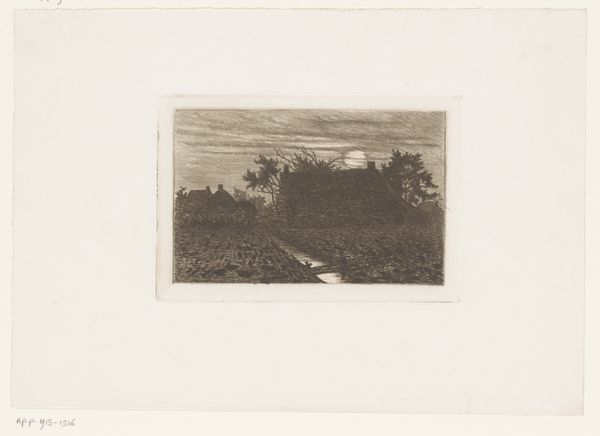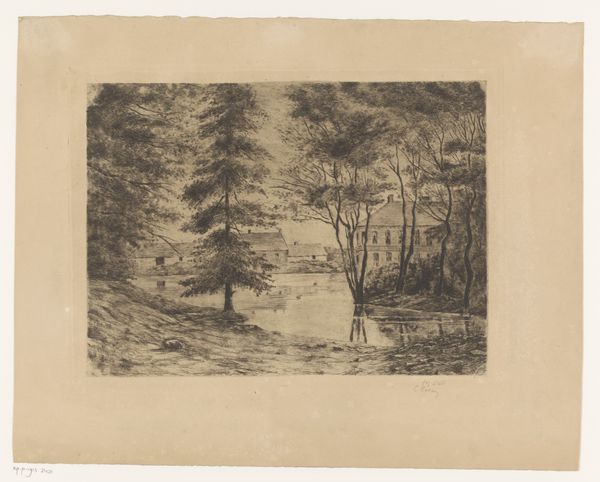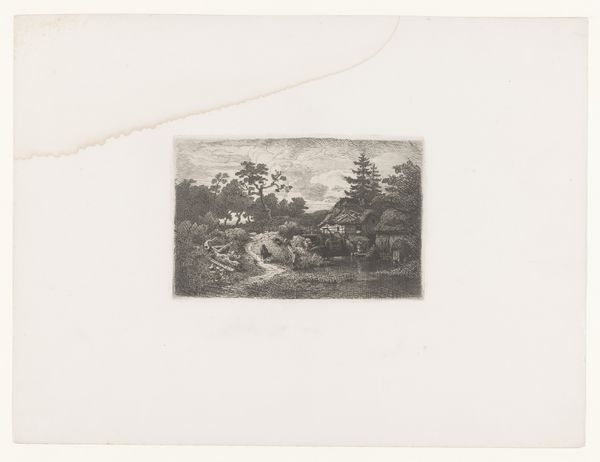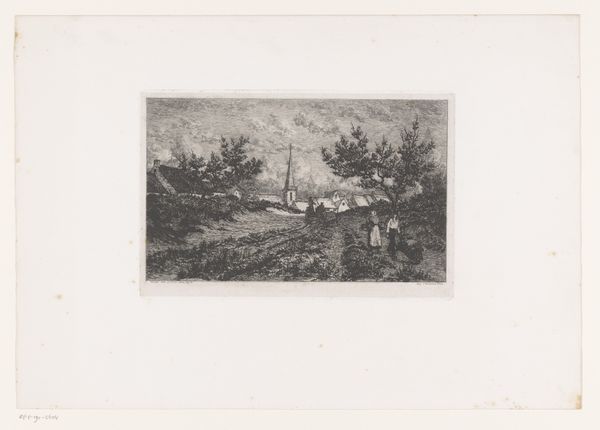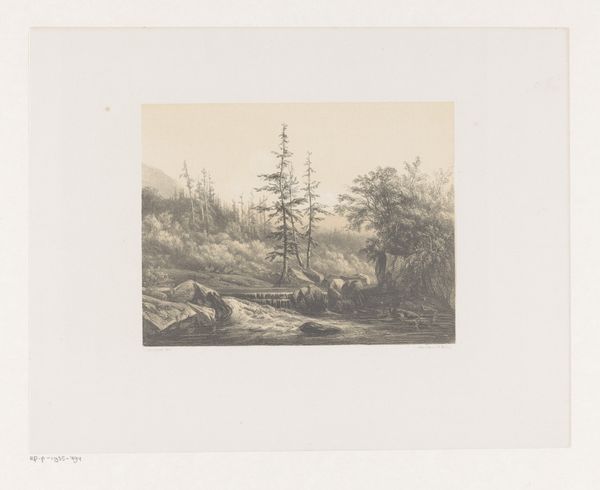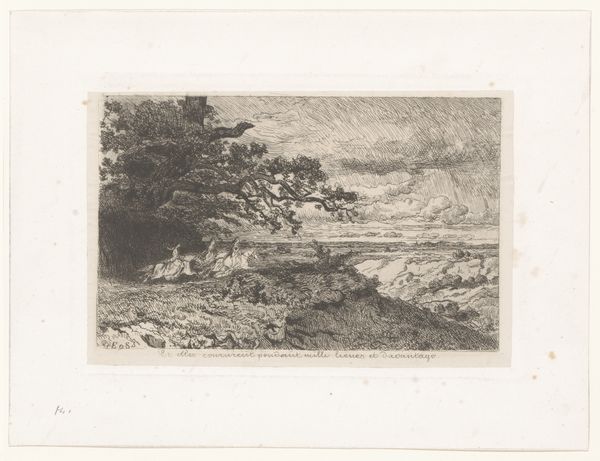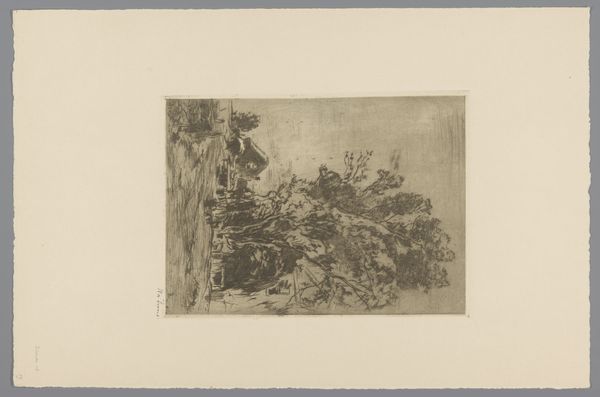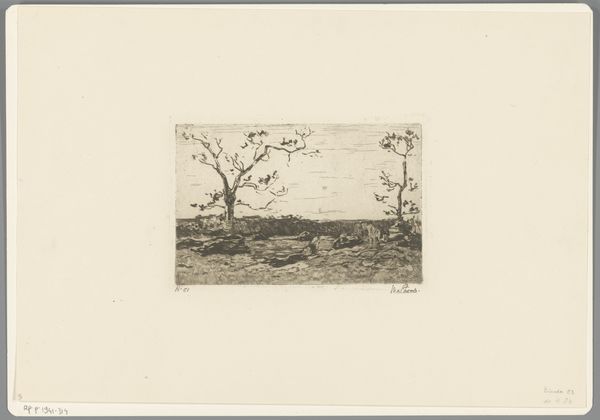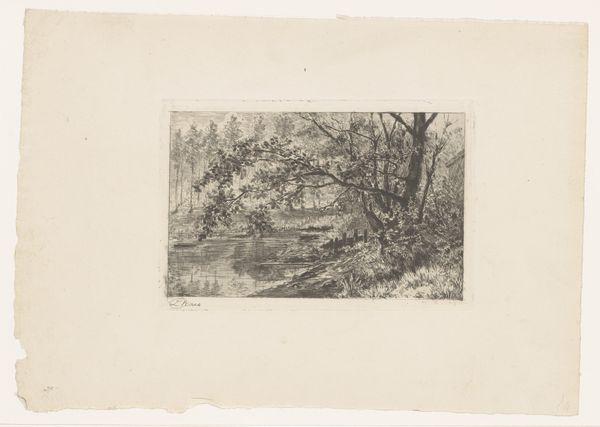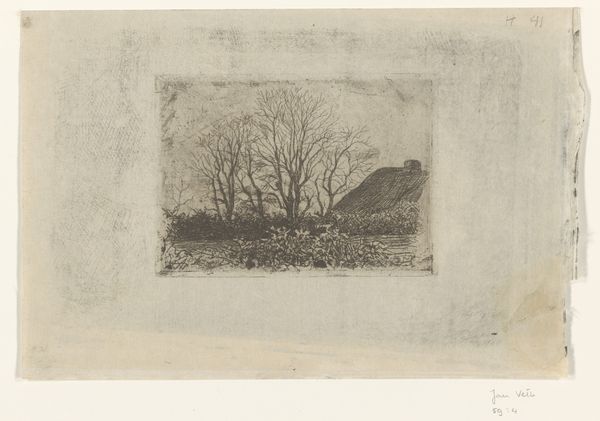
Dimensions: height 237 mm, width 329 mm
Copyright: Rijks Museum: Open Domain
Editor: This is "Gezicht op een zanderij bij Ukkel" or "View of a Sand Pit near Ukkel" by Pol Craps, from 1897, it's an etching. There is something serene about it, almost like a faded memory, and also a little bleak with the contrast between the dark vegetation and patches of what appears to be snow. What do you see in this piece? Curator: The work feels layered with the memory of place, doesn’t it? Sandpits, these zones of extraction, carry a complex cultural weight. Note the repetition of horizontal lines. See how the line of trees echoes the lines created by the land itself. The dark trees create a visual rhythm, don't they? What do you think they symbolize within the context of this sandpit landscape? Editor: Perhaps they represent resilience? The way they endure despite the exploitation of the land? Curator: Exactly! Trees as symbols of strength, renewal, and continuity. Now, consider the 'View' itself. In painting, views are not only physical but conceptual. What story does the scene tell us about man's relationship with nature in this specific area? Editor: It shows a relationship of using natural resources but, maybe because it’s a more naturalistic take on Impressionism, there's a level of observation without too much imposition. Curator: Yes! You have expressed it well! It captures a moment in time while quietly reflecting on deeper questions about human intervention and our imprint on the land. Its serene execution contrasts so starkly with the land usage... Food for thought, eh? Editor: Yes, definitely. I see so many new things in this now. Curator: So do I! Art's continuous revelation, I love it.
Comments
No comments
Be the first to comment and join the conversation on the ultimate creative platform.

